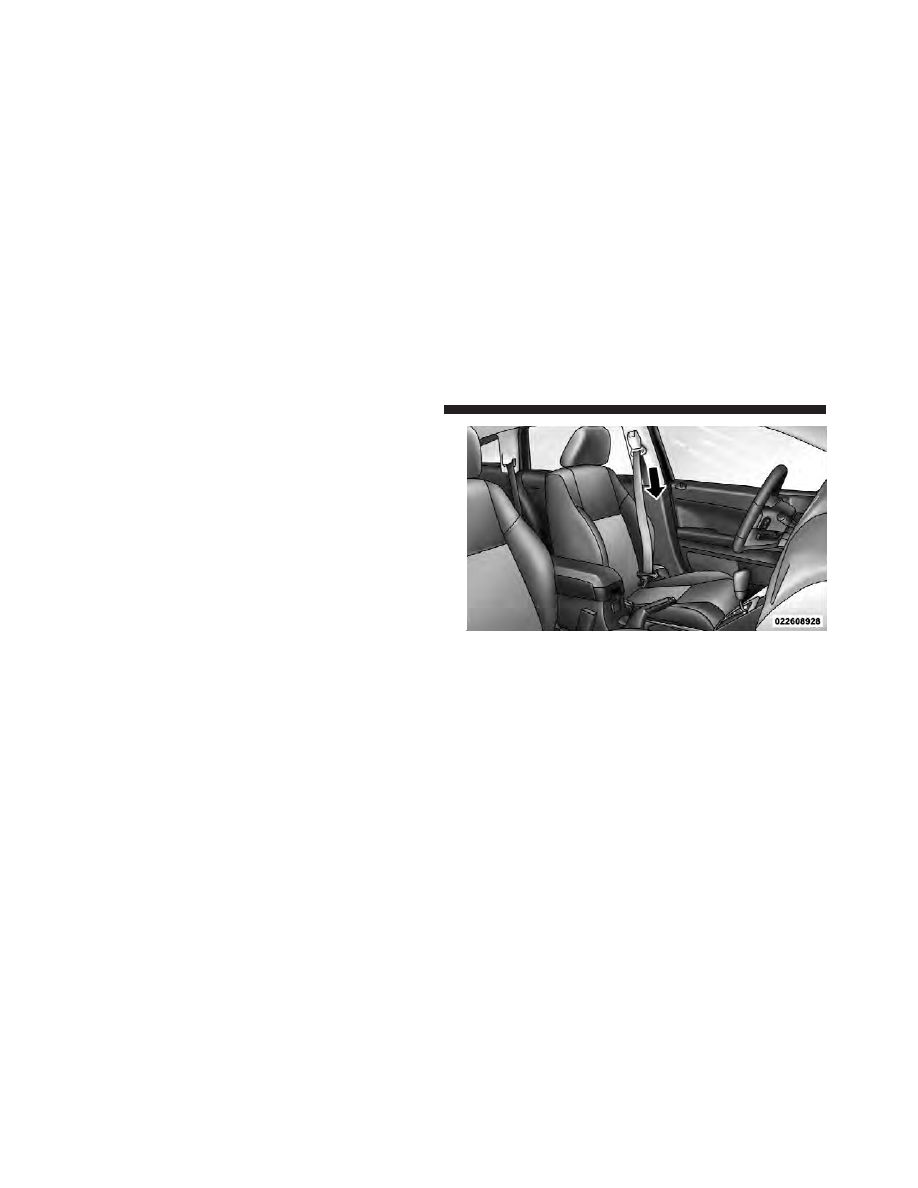Dodge Caliber (2012 year). Manual - part 3

Lap/Shoulder Belt Operating Instructions
1. Enter the vehicle and close the door. Sit back and
adjust the seat.
2. The seat belt latch plate is along side the pillar near the
back of your seat. Grasp the latch plate and pull out the
belt. Slide the latch plate up the webbing as far as
necessary to allow the belt to go around your lap.
Pulling Out The Latch Plate
44
THINGS TO KNOW BEFORE STARTING YOUR VEHICLE